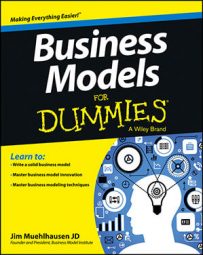The best way to create a good niche is to find an unserved or underserved market. All blockbuster products do this. To paraphrase Strategyn founder Tony Ulwick, “We don’t buy products for their features and benefits; we buy them to help do specific jobs.”
No one bought a cellphone for what it was; they bought it for what it did — made them safer and more productive while driving. The underserved market for cellphones wasn’t one for better phones; it was for the ability to communicate in situations where it was previously impossible.
What does underserved mean? If the market was obviously underserved, an existing player in the market would fill the void. Some guesswork is involved in predicting what underserved means. You have to use your business judgment, and then guess. Only the market knows what’s needed, and the only way to find out is to take it to the market.
Sometimes it’s easy to identify an underserved market. A fast-growing suburb needs gas stations, restaurants, and services in prime retail locations. Exponential growth in use of smartphones creates users faster than the applications needed to serve them.
If you choose a niche in an easy-to-identify growth area, keep in mind that competitors can easily find this niche too. Count on lots of competition.
Instead of going for the obvious niche, be willing to take some chances and pick a less obvious niche. If everyone is chasing mobile phone growth by writing iPhone and Android apps, take a chance on Microsoft apps. For smaller companies, having a less competitive niche can be far more advantageous than being a very small fish in the big pond.
How can you find these elusive unserved or underserved markets?
Personal experience: Many great products and companies have been created by an entrepreneur’s discontent with the status quo. Fred Smith wondered why letters couldn’t be delivered overnight when he conceived FedEx. While traveling in Italy, Howard Schultz wondered why European-style cafes wouldn’t work in America.
Friends and relatives: If you aren’t the cutting-edge type, look to friends who are. What products and services are they buying and why? What problems do they wish they could solve?
Research trends: You don’t need to catch a trend to find a great niche; however, catching a trend can make your niche much better because the growth is built-in.
Hired experts: Professional business plan writers, business model consultants, futurists, or other gurus can help you find a niche.
Luck: Popular website Angie’s List was founded in 1995 when the Internet didn’t exist for very many people. Angie’s List was simply a monthly booklet sent to members with reviews of home contractors. Its popularity was concentrated in historic neighborhoods where repairs were frequent and expensive.
Angie’s List was a nice little business that never envisioned the tidal wave that would carry it to become the leader in its niche. When the Internet turned the Angie’s List business model upside down, it also made it better. Instead of a localized printer of recommendation booklets, Angie’s List became a social media powerhouse.

